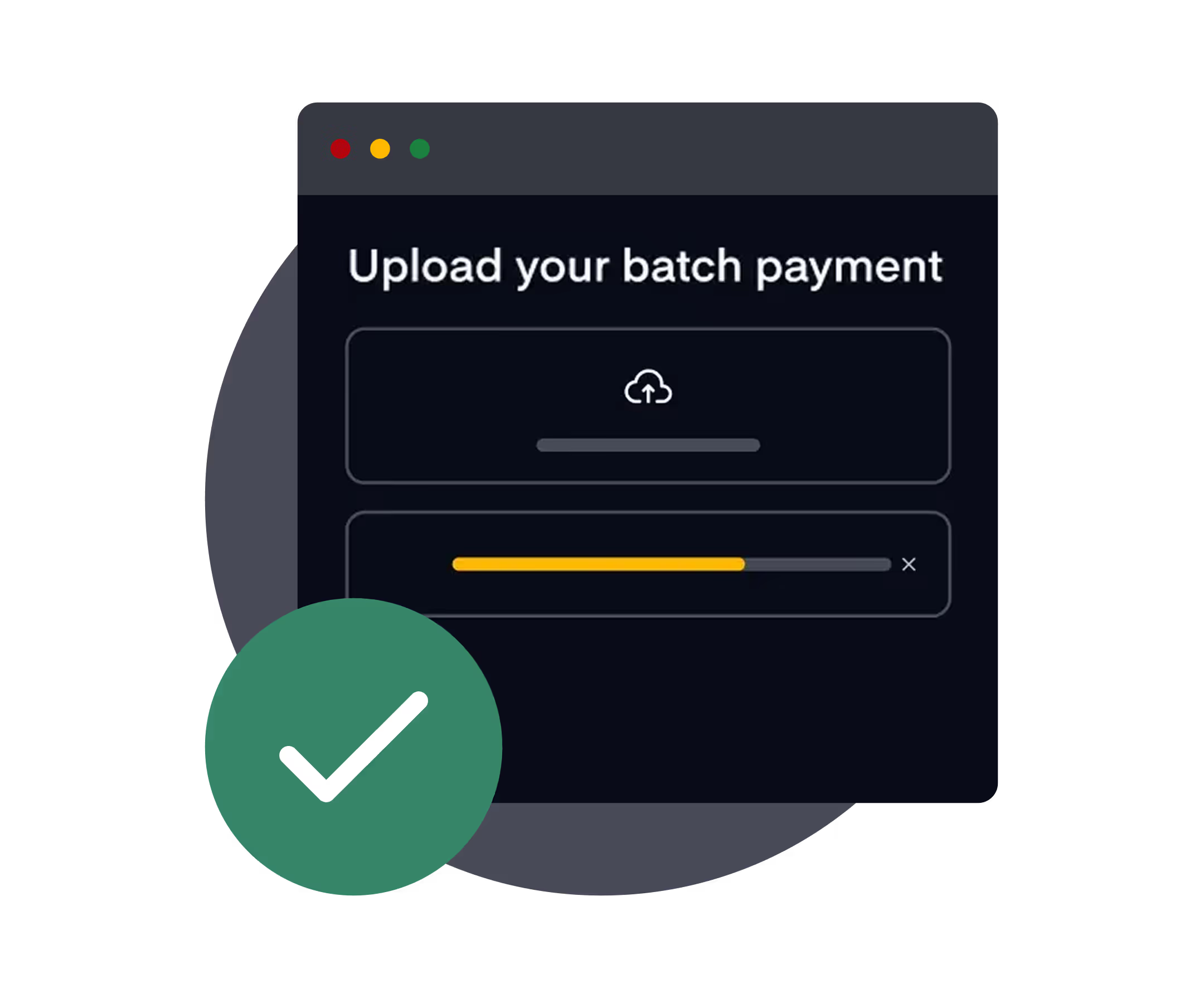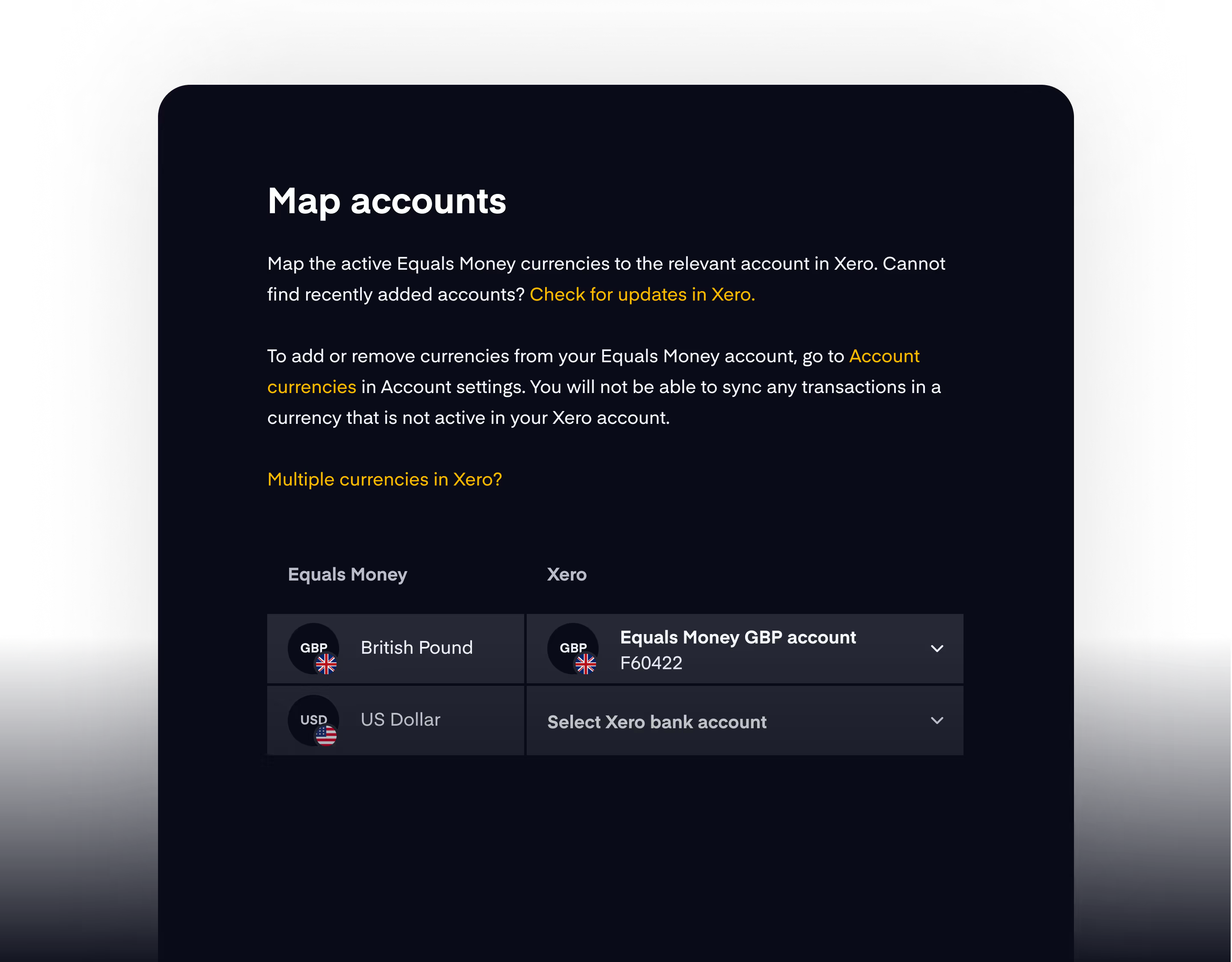AED
The United Arab Emirates dirham (AED) is a significant fiat currency in the Middle East and plays a key role in global finance and foreign exchange markets.
Pegged to the U.S. dollar since 1997 at a stable rate of approximately 3.6725 AED to 1 USD, the dirham benefits from predictable exchange rates that support investor confidence and economic stability.
As the official currency of one of the world’s major oil exporters and a regional financial hub (particularly in Dubai and Abu Dhabi), the AED is frequently used in international trade, investment flows, and cross-border payments.
Its stability, combined with the UAE’s strategic economic position, makes the dirham a reliable currency for FX traders and institutions operating in the Gulf region.
Yes, you can make purchases in AED using an Equals Money card.
Equals Money cards support 21 global currencies (including AED), allowing you to make local currency purchases in the United Arab Emirates. However, your card balance must include the required amount in AED.

.png)
Yes, you can receive payments in AED using an Equals Money account.
Equals Money accounts are equipped with a multi-currency IBAN, allowing you to receive payments and manage funds in 38 global currencies (including AED), without the need for currency conversion.

Yes, you can make payments in AED using an Equals Money account.
Equals Money allows outbound wire payments in 61 global currencies (including AED). Read more on how to make an online payment here.
If you're an existing payments customer and do not have access to an online account, please speak to your account manager or get in touch with our team.

Yes, you can make bulk payments in AED using an Equals Money account.
Equals Money allows bulk (batch) payments in 35 global currencies (including AED).

History of the United Arab Emirates dirham and its role in the UAE economy
The UAE dirham, has been the UAE’s national currency since May 19, 1973. However, before the introduction of the dirham, several currencies circulated across the Emirates, including the Qatari riyal, Bahraini dinar, and even the Indian rupee during British rule.
As mentioned, the dirham was introduced following the formation of the UAE in 1971, as part of a broader move to unify the nation’s financial and economic systems. Initially pegged to the IMF Special Drawing Rights (SDR), the dirham was later pegged to the U.S. dollar in 1997 at a fixed rate of 1 USD = 3.6725 AED.
This currency peg has brought decades of currency stability, reduced import costs, and enhanced investor confidence—critical for a country that relies heavily on oil exports, foreign investment, and international tourism, especially in cities like Dubai and Abu Dhabi. Today, the dirham is considered one of the most stable and trusted currencies in the Middle East.
What is the currency symbol for the UAE dirham?
The UAE dirham symbol is د.إ, which is derived from the Arabic abbreviation for "dirham" (درهم).
Although this symbol is widely used within the UAE, particularly in Arabic-language financial documents and signage, it is not as universally recognised internationally as symbols like the dollar sign ($) or euro (€).
To avoid ambiguity, especially in the context of international transfers and banking, trade, and forex markets, the ISO 4217 code "AED" is the preferred way to denote the currency.
This ensures clarity and consistency across global FX trading platforms, financial software, and systems involving international money transfers. In Dubai’s retail and hospitality industries, you may find prices displayed using either AED, د.إ, or no symbol at all, relying instead on context to imply the use of the dirham.
International identifier for the dirham – AED ISO code
The UAE dirham is officially recognised by the ISO currency code "AED". This code stands for Arab Emirates Dirham and is used across international banking systems, financial exchanges, and currency converters to identify the dirham unambiguously.
The ISO code is particularly important in foreign exchange markets, exchange rates, financial reporting, and travel money services, as it prevents confusion with other currencies that may share similar names or symbols.
For example, several countries use currencies called “dinar” or “dirham” in some form, including the Moroccan dirham (MAD), Jordanian dinar (JOD), and Bahraini Dinar (BHD). The ISO code AED ensures that institutions and traders around the world correctly interpret transactions involving the UAE dirham.
Who controls the AED currency? The Central Bank of the UAE
The Central Bank of the United Arab Emirates (CBUAE) is the sole issuing authority for the AED currency.
Established in 1980, it took over from the former UAE Currency Board and has since played a vital role in regulating the country’s monetary policy, managing inflation, overseeing financial institutions, and maintaining the peg between the dirham and the U.S. dollar.
Headquartered in Abu Dhabi, the central bank operates under federal authority and works closely with both domestic and international financial stakeholders. It also manages the UAE’s foreign currency reserves, supports economic growth, and ensures that the UAE’s banking system meets international standards of transparency and liquidity.
By maintaining a stable currency, the Central Bank has helped the UAE (and particularly Dubai) evolve into a leading financial and trade hub in the Middle East.
What are fils? Understanding the UAE dirham's subunit
Like many global currencies, the dirham is divided into 100 smaller units called fils - similar to how the euro (EUR) is divided into cents.
This subunit system aligns the dirham with other decimal-based global currencies, which makes calculations and price conversions more straightforward for visitors and traders alike.
The fils has existed since the introduction of AED in 1973 and serves as the foundational unit for UAE dirham coins.
UAE dirham coins and notes: denominations explained
The United Arab Emirates dirham is available in a range of banknotes and coins designed to accommodate both small and large transactions.
Common banknote denominations include 5, 10, 20, 50, 100, 200, 500, and 1,000 dirhams, with each polymer banknote featuring distinctive colours, Arabic calligraphy, and imagery that highlights the UAE’s cultural and architectural landmarks.
For example, the 500 dirham polymer banknote showcases Dubai’s iconic Jumeirah Mosque, while the 100 dirham note features a traditional fort in Fujairah.
As mentioned, UAE dirham coins are issued in fils, the subunit of the dirham, and include 1, 5, 10, 25, and 50 fils, though the lower-value coins (1, 5, and 10 fils) are rarely used due to inflation. Today, 25 fils, 50 fils, and 1 dirham coins dominate everyday cash transactions, such as paying for travel money services, parking, small retail items, or transport fares (such as taxi rides). In some cases, cashiers will round totals to the nearest 25 or 50 fils due to the unavailability of smaller coins.
What is the dirham? Names and nicknames of the UAE Currency
The official name of the AED currency is the United Arab Emirates dirham, commonly referred to simply as the dirham in both Arabic (درهم) and English.
The term “dirham” traces its origins back to the ancient Greek drachma and has been used historically in various Arab and Islamic states for centuries. In the modern UAE, the term is used both formally and informally across all seven emirates.
Among expatriates and tourists, especially in Dubai, the dirham is sometimes casually called “bucks”, much like the U.S. dollar (USD), though this nickname is purely colloquial and not officially recognised. In multilingual communities, such as exchange rates, people often refer to the currency by its ISO currency code (AED) to ensure clarity. While other informal names exist in regional dialects, “dirham” remains the most widely accepted and understood term across the UAE and in global financial circles.
Popular AED currency pairs in forex trading
Although the UAE dirham is not classified as a major currency in global forex markets, it is still widely traded in regional and institutional FX transactions.
Its stable currency peg to the U.S. dollar makes it a predictable and low-volatility currency, appealing to those seeking currency stability over speculative profits.
The most commonly traded forex currency pair involving the dirham is USD/AED, which is virtually static due to the fixed exchange rate. Other notable pairs include:
- EUR/AED (euro/ UAE dirham) – Reflecting trade and investment flows between the UAE and the eurozone.
- INR/AED (Indian rupee/ UAE dirham) – Highly active due to the large Indian expatriate population in the UAE and the substantial remittance market.
- GBP/AED (British pound sterling/ UAE dirham) – Frequently used by British expats and investors conducting business or property transactions in Dubai.
- AUD/AED (Australian dollar/ UAE dirham) and CAD/AED (Canadian dollar/ UAE dirham) – Gaining popularity among expats from Australia and Canada.
Because of the dirham’s peg to the U.S. dollar, fluctuations in AED pairs are primarily driven by changes in the value of the other currency in the pair. While speculative forex traders may find AED less attractive due to its low volatility, its stability is a key advantage for businesses, governments, and investors dealing with FX risk management and UAE-based financial assets.
















